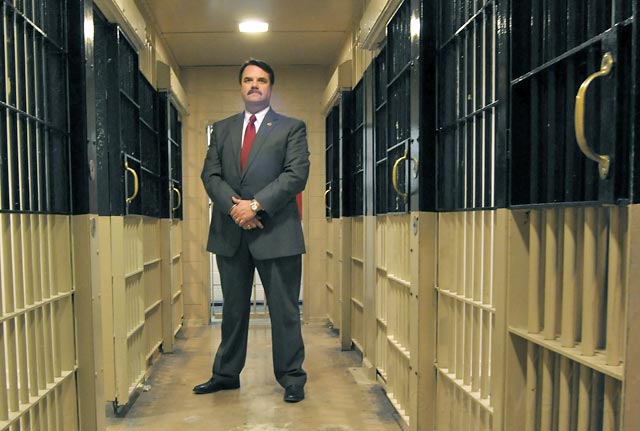
Santa Barbara County has been given the green light from the state to pursue funding for a new North County jail under Phase Two of AB 900 — the second half of a 2007 bill that, through lease revenue bonds, provided funding to counties to construct or expand jails. Should Santa Barbara move forward with the application, the county would potentially have to forgo more than $56 million it already secured during the first phase in the hope it will receive a better funding deal under the second.
But the incentive could be worth it. The new Phase Two program will require only a 10-percent match for 90-percent state funding, while the money the county secured under Phase One required a 25-percent local contribution. Although the county could be in a position to get more bang for its buck, it will have to weigh the risks associated with several available options.
Under Phase One, Santa Barbara County — which plans to build a new 304-bed North County jail along with a state reentry facility — was one of 25 jurisdictions to request AB 900 funding, but one of only 11 to actually receive it. Under Phase Two, funding preference will be given to the counties with the highest prisoner-commitment numbers in the state, according to officials, and to those like Santa Barbara County that are potentially relinquishing their Phase One money.
The state provides a couple options for such counties. In one option, the county could not ask for more money than it received under Phase One and would have to commit to help with a reentry facility. After legislative action moving money around, Santa Barbara could then be given preference over several other applicants. Another option would allow the county to seek additional cash (with a cap of $80 million) and not include plans for a reentry facility, but it would not get the preference the other option offered. The county could also submit multiple applications or choose to keep its Phase One cash while still applying for Phase Two funding.
Sheriff Bill Brown and County CEO Chandra Wallar both confirmed the county had submitted the first step to its application. Brown, however, hesitated to give many details about his new plan, as it was still being refined leading up to a Board of Supervisors hearing on December 6. “We are indeed working to reapply under the Phase Two AB 900 grant rules, which are more favorable to us than the Phase One and could potentially allow us to build a better product,” Brown told The Independent last week.
The current county jail, located on the Calle Real campus in Goleta, is stuffed to the gills with inmates, and Brown is under court order to release some early. He is the latest sheriff to try to tackle the overcrowding issue and has made the most progress out of any. Under Brown, the county has secured a site in North County. He made a valiant but ultimately failed effort to get a half-percent sales-tax ballot measure passed that would’ve both built the jail and provided the annual $17 million to staff it.
While 35 of the state’s 58 counties turned in requests for applications to make themselves eligible for the more than $600 million in Phase Two funding, nine didn’t make the cut. According to officials, counties invited to apply were chosen because of an anticipated increase of prisoners they are expected to house as a result of AB 109, a recently implemented realignment where — in an effort to reduce the overcrowded prison system — nonserious, nonviolent, non-sex offenders would become the responsibility of local jails, not the state prison system. After one month, according to Sheriff’s Department spokesperson Drew Sugars, 40 people have been committed locally under AB 109 —
21 people were sentenced through the courts, two were put on probation, and 17 people were paroled from state prison. The Department of Corrections had anticipated a total of 29.
While realignment is introducing a new population back into the public, it is also changing the dynamics of the County Jail. Its population has already shifted over the years because of overcrowding, prompting the Sheriff’s Department to release less serious offenders. A snapshot of the jail on October 24 showed there were 68 inmates being held on murder and attempted-
murder charges. The majority of inmates are considered pre-sentence — that is, awaiting trial or on trial — while 141 people are serving a sentence. The sheriff also has electronic monitoring for 93 people and 82 people in a SWAP program. Capacity of the jail should be 788, but on that recent Monday, the total number of inmates was 903 people in the county’s main jail and medium security facility. The Santa Maria Jail is currently being used only as a booking facility, but would be rated for 28 beds should it operate as a full-time, overnight facility.
If the board chooses to move forward with Brown’s plan, the county would have to submit its application to the Corrections Standards Authority (CSA) by January 11, and the CSA board would meet in March to take a look at which jails around the state to fund. Even if the county does receive the funding, the question that remains unsolved, however, is how to fund annual operations of the jail. Brown’s answer to that question could be given during his presentation on December 6.

